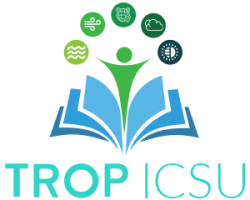Climate Change in the Life Sciences Classroom

Climate Change in the Life Sciences Classroom Reading An article by Amy J. Hawkins and Louisa A. Stark titled ‘Bringing Climate Change into the Life Science Classroom: Essentials, Impacts on Life, and Addressing Misconceptions’ in the American Society for Cell Biology journal Life Sciences Education. This reading discusses how climate change can be taught in […]
Climate Change and Ecosystems

Climate Change and Ecosystems Reading A journal volume compiled and edited by Janet Franklin, Yadvinder Malhi, Nathalie Seddon, Martin Solan, Chris Field, Nancy Knowlton and Monica Turner titled ‘Climate change and ecosystems: threats, opportunities and solutions’ at the ‘Philosophical Transactions of the Royal Society B, Biological Sciences’ that discusses the link between climate change and […]
A Single-layer Atmosphere Model to Explain Atmospheric Warming

A Single-layer Atmosphere Model to Explain Atmospheric Warming Reading A reading to learn about the energy balance of planet Earth and to understand atmospheric warming by using a single-layer atmosphere model. Students will learn about emissivity and absorptivity. Further, they will learn about the greenhouse effect of the atmosphere by calculating the temperature of a […]
Hurricanes and Climate Change

Hurricanes and Climate Change Reading A reading to learn about what affects hurricane activity and the measures that can help in building resilience to the impacts of hurricanes. Students will read about the effects of warmer sea surface temperatures and sea-level rise on hurricanes. They will also discuss changes in the frequency and intensity of […]
Changes in Intensity and Frequency of Hurricanes

Changes in Intensity and Frequency of Hurricanes Reading A reading to learn about recent changes in hurricane activity, specifically in the Atlantic. Students will read about changes in Atlantic storm activity, factors that affect hurricane intensity and frequency, and the impact of global climate change on these factors Use this tool to help your students […]
Glaciers as Indicators of Climate Change

Glaciers as Indicators of Climate Change Reading A reading that introduces the topic of glaciers and their formation. Students will read about the formation of glaciers, common glacial features, and changes in the extent of glaciers over the past 750,000 years. They will also discuss how glaciers may serve as indicators of climate change. Use […]
Feedback Mechanisms

Feedback Mechanisms Teaching Module A teaching module titled ‘Feedback mechanisms’ from the e-learning course titled ‘Earth in the Future’ developed by Timothy Bralower and David Bice, The Pennsylvania State University. This module discusses the various feedback mechanisms and is listed in Module 3: Earth’s Climate System of the e-learning course. This overview reading can be […]
What is the Biosphere?

What is the Biosphere? Reading A short reading by the Aspen Global Change Institute that summarizes what the biosphere is. This resource can be used as an introduction to the topic by teachers interested in teaching about climate change and the role of the biosphere. This reading includes overview discussions on the following topics: What […]
Stern Review: The Economics of Climate Change Part 1

Stern Review: The Economics of Climate Change Part 1 Reading A reading from the ‘Stern Review: The Economics of Climate Change’ by economist Nicholas Stern for the Government of the United Kingdom which contains a compilation of the scientific evidence of human caused climate change, its analysis through economic theory, and discussion on possible alternatives […]
Post-pandemic Economic Policies

Post-pandemic Economic Policies Reading A reading by Carbon Brief explaining how countries around the world design economic policies for a ‘green recovery’ from the recession due to the COVID-19 pandemic, by reducing carbon emissions while boosting their economies. Students will be introduced to terms such as green recovery, green stimulus, and quantitative easing, among others. […]


